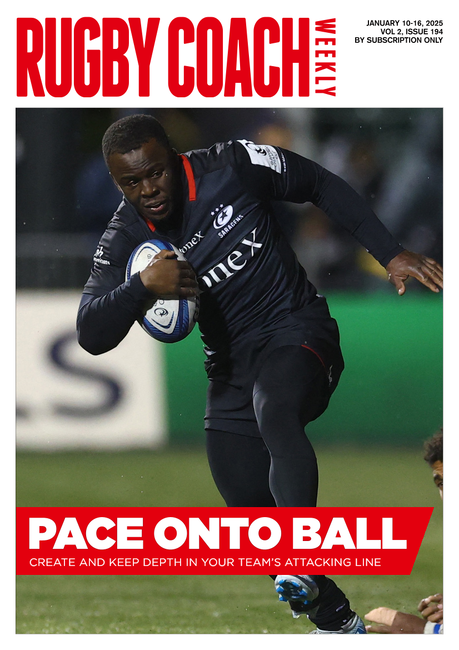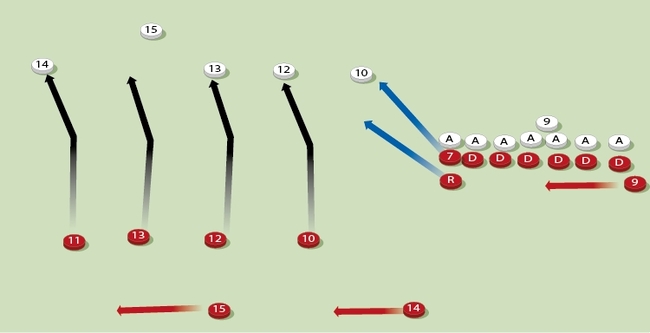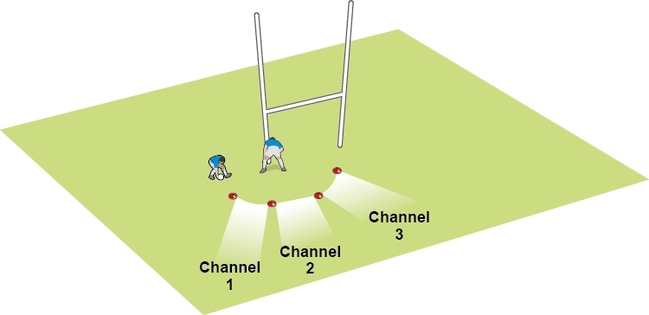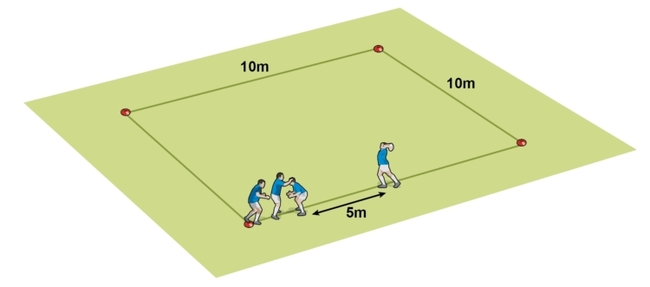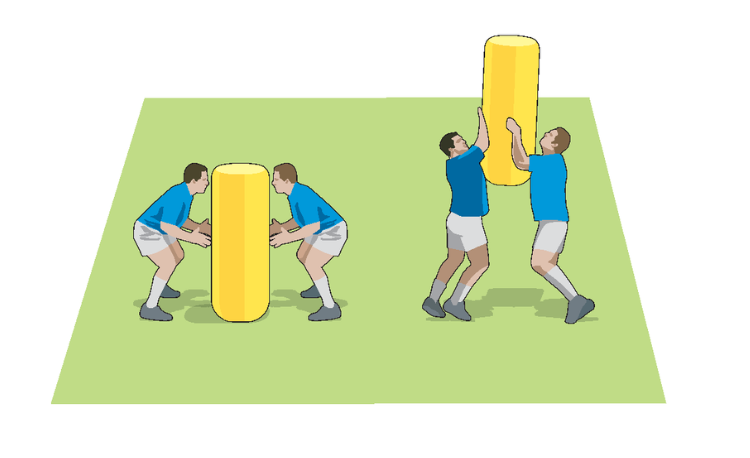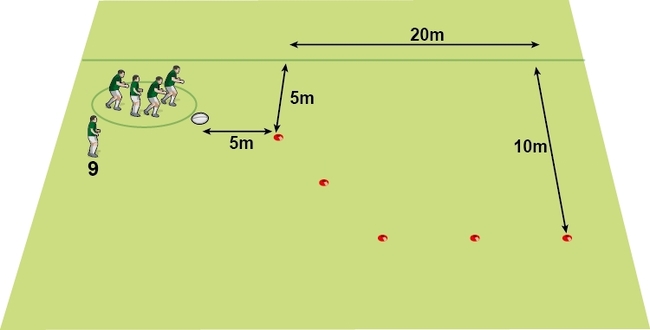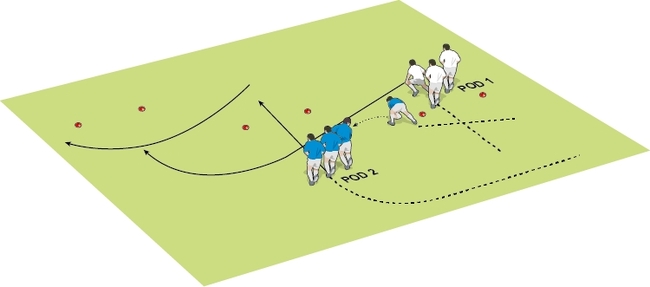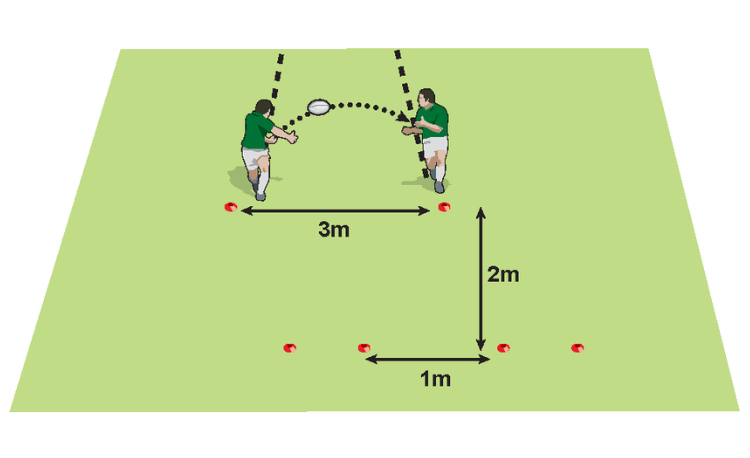Coaching tips for lineout lifting
Scrums & Lineoutsby Dan Cottrell
1. Selection
Who should be lifted? Forget the old adage about locks being the only jumpers, and follow these simple tips. Light and nimble at number two, tall at four.
The number two jumper needs to be quick on their feet and be able to rise quickly to take a timed ball, which is thrown flat. Number four needs to get as high as possible, though not as quickly, because the ball is more likely to be lobbed. A flanker could be your front jumper.
Who should lift? Again it may be worth ignoring the traditional combinations of props for lifters and considering what each numbered jumper needs. Number two needs a quick lift, so it may suit a shorter player, but certainly a strong, well co-ordinated lifter.
They will need to focus on getting the player up in time with the thrower, to beat their opposition jumper to the ball. In the middle of the line, the taller lifters will be more useful, because the type of ball that comes in will typically be thrown higher, to clear the front of the line.
2. The mechanics
Binding safety issues: The law says: Players in the lineout who are going to lift or support a team-mate jumping for the ball may pre-grip that team-mate providing they do not grip below the shorts from behind or below the thighs from the front.
At every level it is essential that the lifters do not only lift the player, but bring them down safely. This requires as much practice as the lift. The person who lifts face to face with the jumper must not yield ground i.e. fall backwards.
Lifting and jumping: Once the players are chosen, some might need to be educated or re-educated in the art of lifting and jumping.
Lifting is not dissimilar to the snatch and jerk in weightlifting. A wide base is used, with both feet and hips square in the direction of the player to be lifted. A common mistake is to lift from the arms. Better to use the large muscle groups in the legs to propel the player upwards initially, with the arms providing the final push at the top.
The lift: Especially at the front of the line, the lift is more about timing skills than height. It is therefore helpful for pairs of lifters to practice drills together before introducing the jumpers.

Try a drill to work on these skills. Players stand opposite each other and on a call, drive push their hands together and then upwards. Taking a tip from baseball, where the batters warm up by swinging a couple of bats together to make the actual bat feel much lighter, the lifters could then move onto lifting the heaviest player together. When they lift the player, they will probably find they push him to the top of their limit far easier than before.
The jumper: The jumper needs to practise a routine to jump. And jump they must, because it is this crucial upwards momentum that will not only signal to the lifters they are ready to jump, but also to give the lifters a vital start to the lift.
There are a couple of basic skill tips that lead to a higher jump. The first is that two feet are better than one, and the second is that there will be more height from a player who is moving forwards than backwards. Therefore a jumper can take a small jump onto two feet and then jump forward into the facing lifter. The arms should be half raised, praying mantis like, to give balance and avoid interference from the opposition. Leap like a ballerina, with the toes pointing down and the legs straight.
The thrower: The thrower need not be the hooker (some might remember the great days when the winger used to throw the ball in). It is certainly worth trying out a few players because a great plan can easily disintegrate if the thrower gets injured at the start of the season.
3. Lineout Glossary
Number two or front jumper: The first three players in the lineout form the two supporters and the front jumper in the middle.
Number four and middle of the line jumper: Though traditionally standing in the number four position, the middle jumper now moves around in the middle of the line between four and five and is supported by two players standing at either three, four, five or six.
Flat ball: Throwing the ball on a flat, fast trajectory, using the timing and speed of the jumpers to make the catch.
Lob ball: Throwing the ball over the opposition. Good for a particularly tall jumper.
Front peel: When players catch and move the ball from the front of the lineout through the 5m channel between the lineout and the touchline. The players at the back of the line peel off and move to the front of the line whilst the ball is in the air.
Back peel: When players catch and move the ball into the area just outside the 15m area. The players at the front of the lineout peel off and move to the back of the lineout. Particularly effective because there is a 10m space between the lineout and the defenders, and it is good to have forwards running at backs sometimes.
Newsletter Sign Up
Coaches Testimonials

Gerald Kearney, Downtown Las Vegas Soccer Club

Paul Butler, Florida, USA

Rick Shields, Springboro, USA

Tony Green, Pierrefonds Titans, Quebec, Canada
Subscribe Today
Be a more effective, more successful rugby coach
In a recent survey 89% of subscribers said Rugby Coach Weekly makes them more confident, 91% said Rugby Coach Weekly makes them a more effective coach and 93% said Rugby Coach Weekly makes them more inspired.
Get Weekly Inspiration
All the latest techniques and approaches
Rugby Coach Weekly offers proven and easy to use rugby drills, coaching sessions, practice plans, small-sided games, warm-ups, training tips and advice.
We've been at the cutting edge of rugby coaching since we launched in 2005, creating resources for the grassroots youth coach, following best practice from around the world and insights from the professional game.


